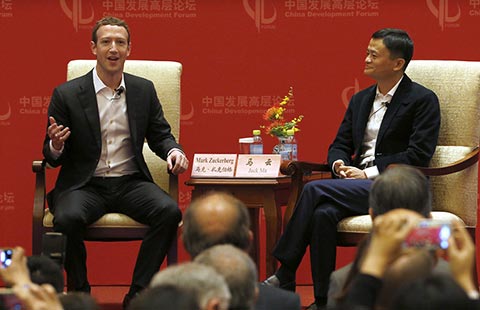Human resources need more investment
By He Bolin (China Daily) Updated: 2012-09-27 15:58
The demographic dividend has served as an important engine for China's economic boom in the past decades. The high percentage of working age people and the small proportion of elderly that needed support and care meant China had a favorable population structure to support economic growth.
But it needs to be pointed out that this kind of population structure alone cannot promote growth, and other factors, of which a proper economic system is the most important, are also necessary. So the past three decades of remarkable economic growth can be attributed to the combined effects of its demographic dividend and the government's constant efforts to push forward economic reforms. In fact, according to calculations by Jiang Xiangqun, a professor at the School of Sociology and Population Studies, Renmin University of China, the demographic dividend contributed 27 percent of GDP growth per capita.
But China is now facing a challenging situation, Jiang says, as the dependency ratio of the population will begin to rise in 2013 and its demographic dividend will begin to vanish in 2030 when the proportion of working-age people equals the proportion of old and young in the whole population. Jiang worries that as the natural population growth has declined to 4.79 percent China's population will reach its turning point and start to decline by 2040.
Du Yang, a professor at the Institute of Population and Labor Economics of the Chinese Academy of Social Sciences, says the main challenges facing China are the rising dependency ratio, the rising labor costs as a result of the disappearing demographic dividend and the need for greater public expenditure on care for the elderly.
As the ratio of the working-age population to those needing support will start to decline, or even worse, as the labor force starts to decrease, China urgently needs to transform its economic growth mode, as the dwindling quantitative advantage of human resources will no longer support the old growth mode that depends on the input of the elements of production, Du says.
At the end of 2011, there were 185 million senior citizens at or above the age of 60, accounting for 13.7 percent of the total population. The proportion is expected to reach 16 percent in 2015, 20 percent in 2025, and more than 30 percent by 2050, when there will be more than 500 million people aged 60 or over.
Meanwhile, the disappearing demographic dividend will increase labor costs. If that happens, it will neutralize part or even all of the positive effects brought by better productivity and thus put additional pressure on enterprises. And the rising population dependency ratio will require a greater input into services for the elderly, Du says.
To respond to these challenges, relaxing the family planning policy has been widely discussed, but as Du points out it will take two decades for this to have an impact on the labor force. Moreover, he said it is too early to conclude that such a measure would result in a significant rise in the birth rate.
In 1985, the central government allowed Yicheng of Shanxi province to be a special pilot zone for a two-child policy. But surprisingly, there hasn't been any noticeable population growth in Yicheng since then.
In addition, international experiences show that the trend of economic development resulting in a lower birth rate is irreversible.
So other measures must be considered, Du says. Pushing forward reform of the household registration system and the integration of the social welfare system will incorporate more of the rural population into the urban labor force and thus help to maintain the demographic dividend as long as possible.
Enterprises should also make greater efforts to boost their innovation capabilities and increase their productivity to offset the rising cost of labor. The government can help by implementing long-term strategic policies to encourage them.
But there is still a huge labor force, according to Jiang, the problem lies with the dearth of young people to do unskilled manual labor. He attributes this to the changing population structure, sluggish industry upgrading, and employment information asymmetry. All of which require the government to accelerate the transformation of the economic growth mode, improve education and boost public services. Fundamentally, he says, investment in human capital and the construction of an innovative society are necessary to overcome the declining demographic dividend.
The author is a reporter with China Daily. E-mail: hebolin@chinadaily.com.cn
- Driving force for transition
- Aging society 'opportunities' for insurers
- Higher productivity to counter rising labor costs
- Economic model must change
- Economic slowdown cools labor market
- China to facilitate cross-border investment
- Investment attention turning to ASEAN
- Guangzhou: labor shortage haunts small factories
- WB and IMF remain confident on China’s economic growth
- Guangzhou OED Technologies raring to wrap the world in e-paper
- Stock market investors' risk appetite to grow
- Sky is the limit for jobseekers in aviation industry
- Relentless buyer of Western brands has his sight firmly set
- Little-known Joyson throws its hat into global air-bag ring
- In absence of religion, personalized weddings are becoming sacred
- Chinese wedding gowns are in fashion again
















